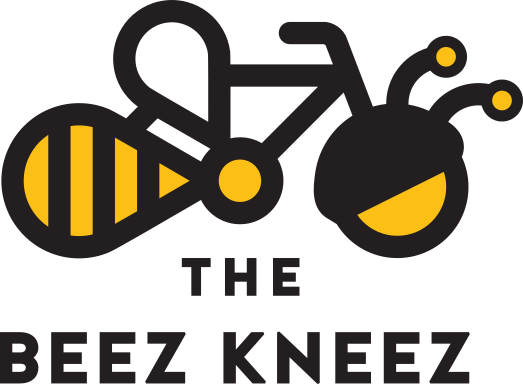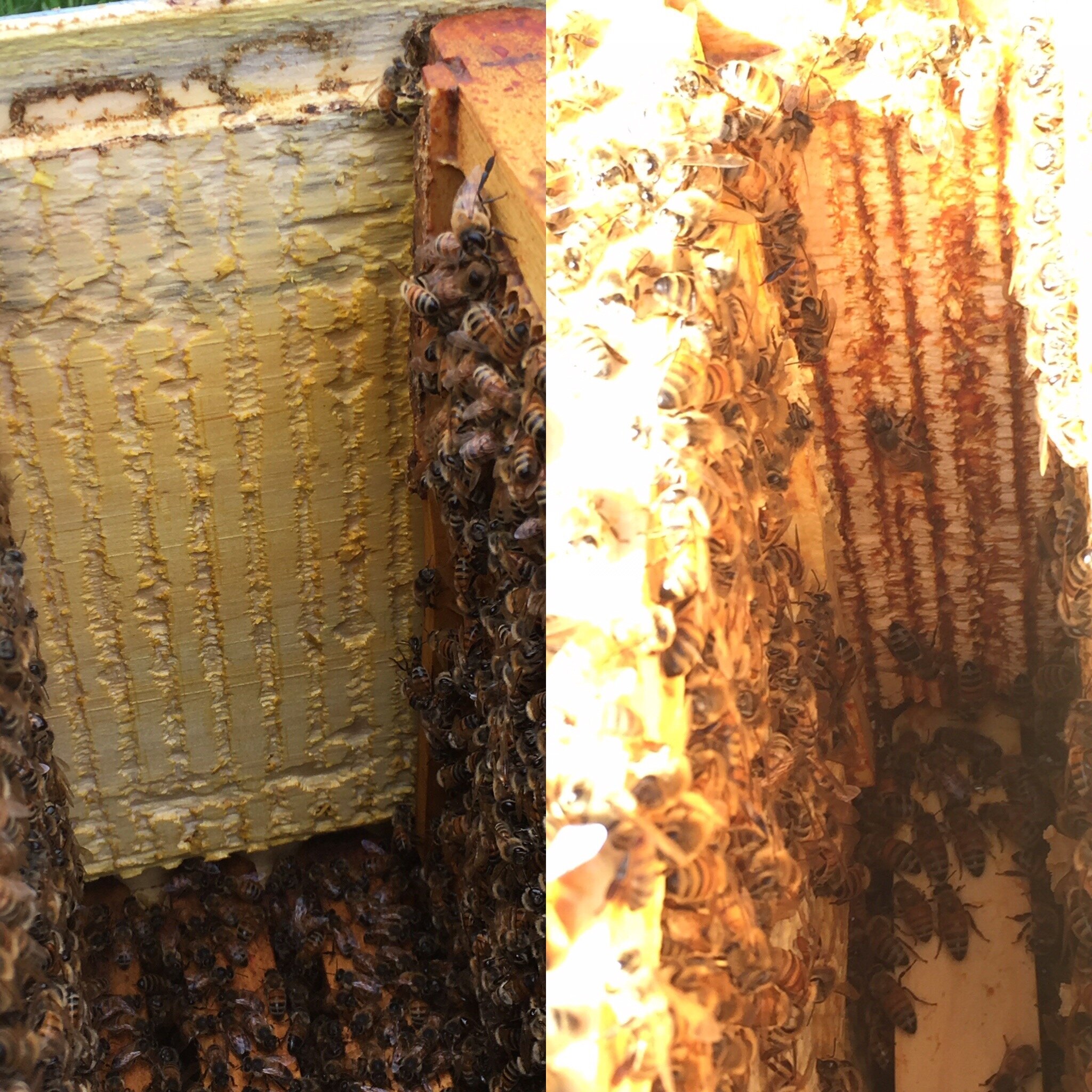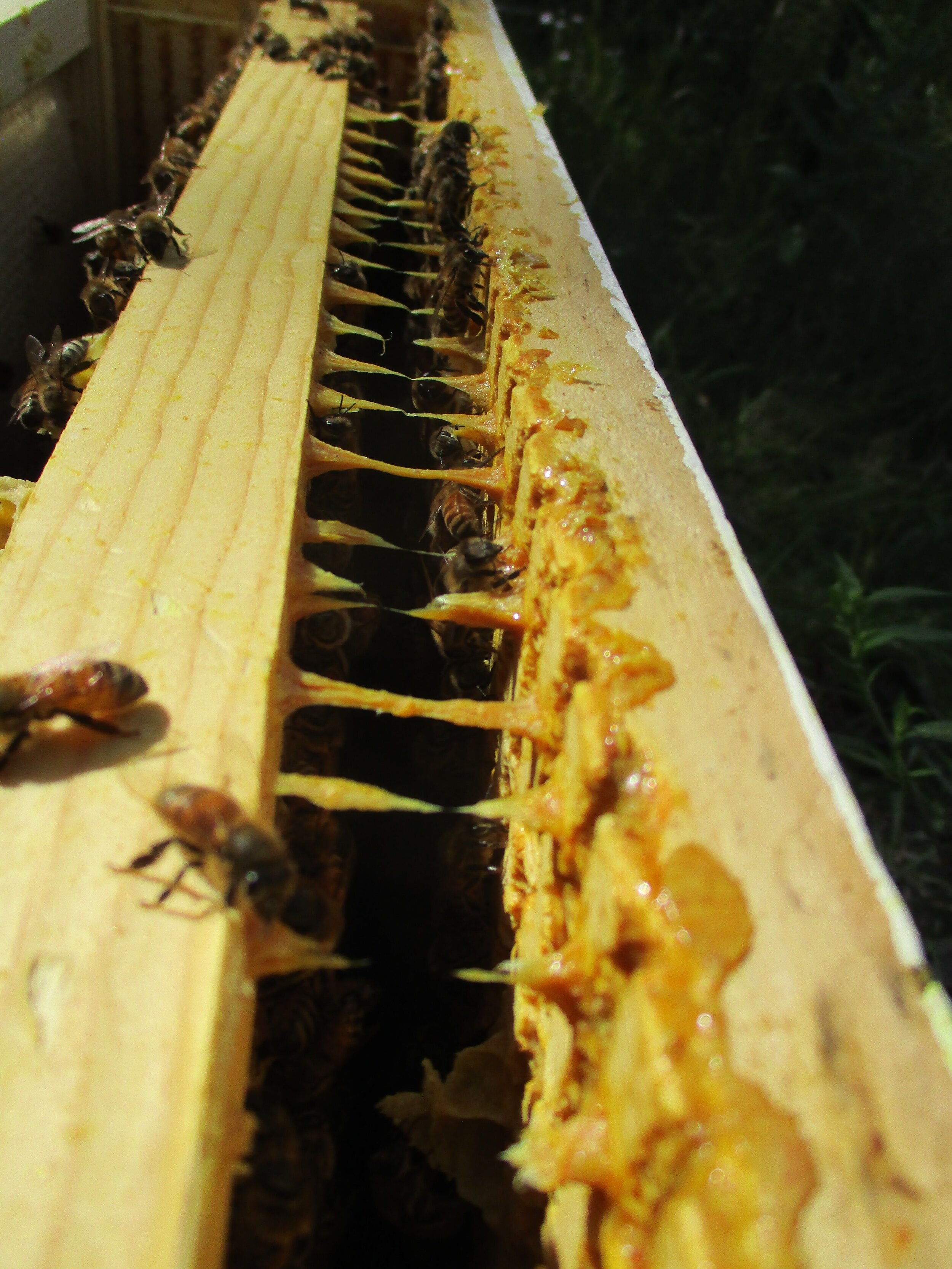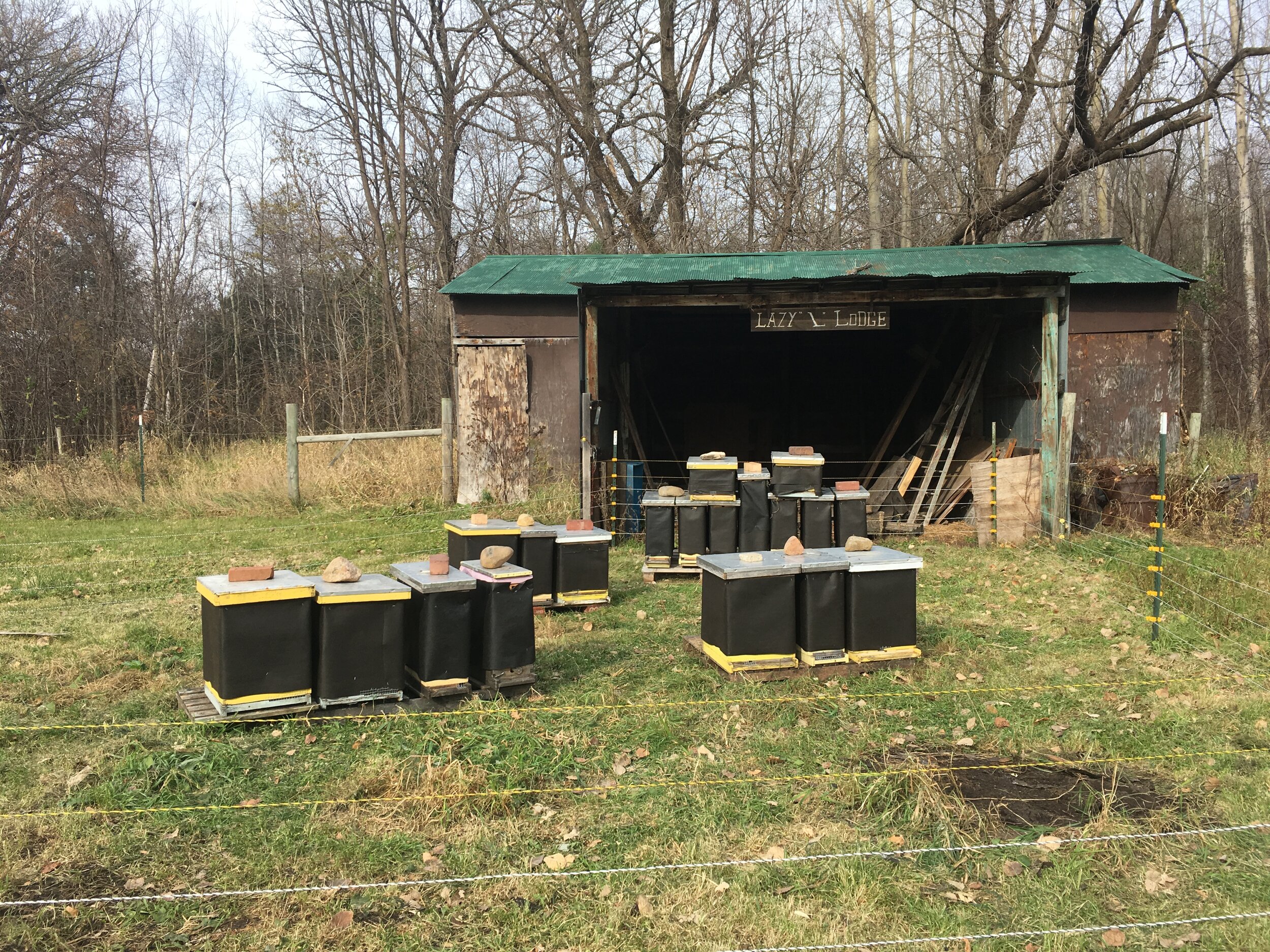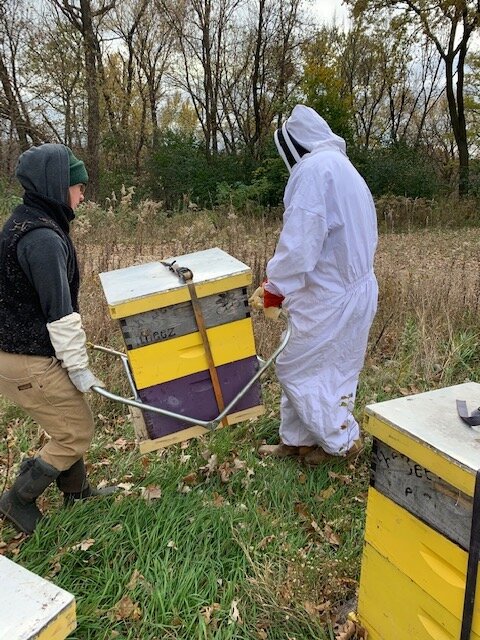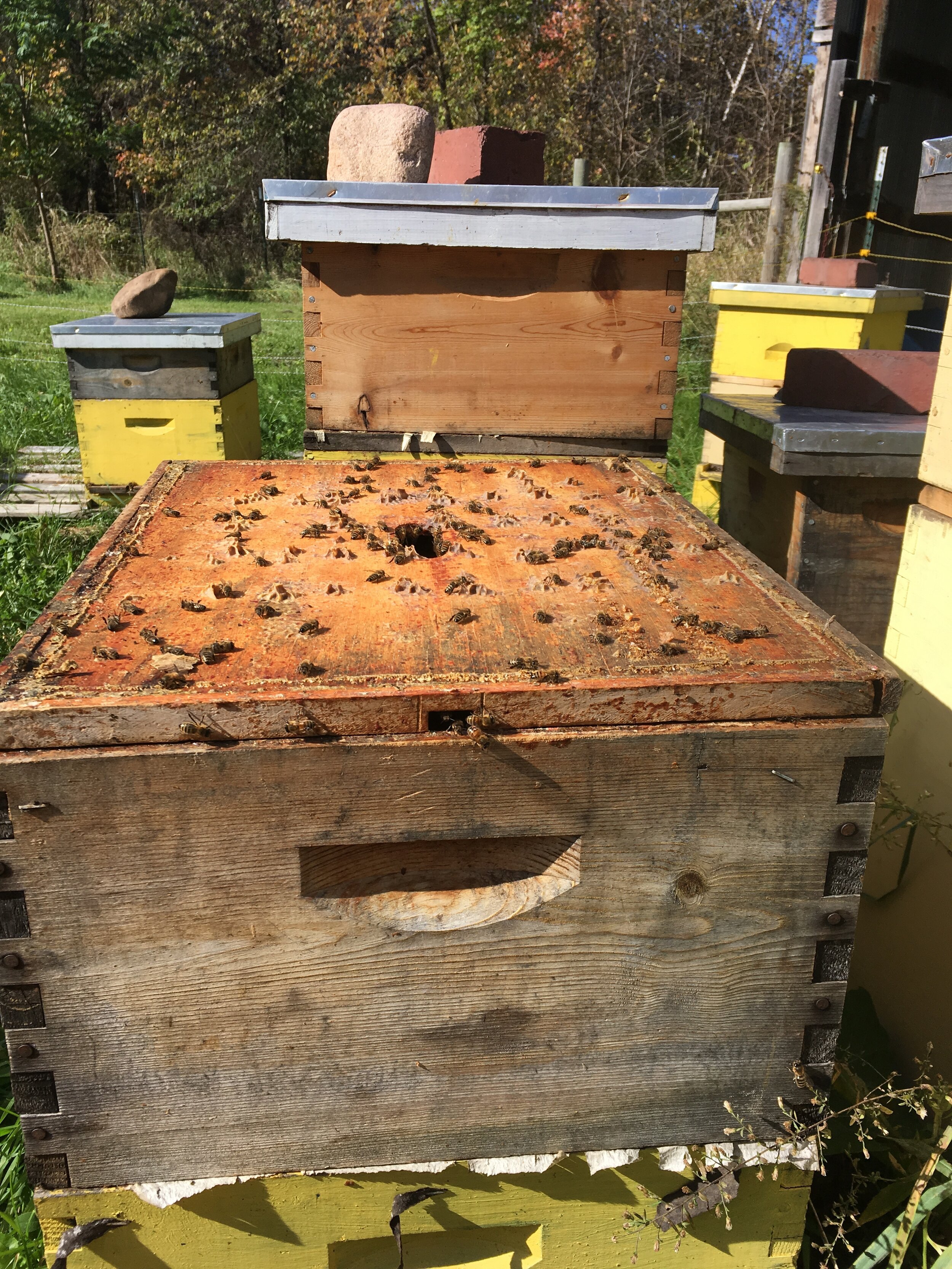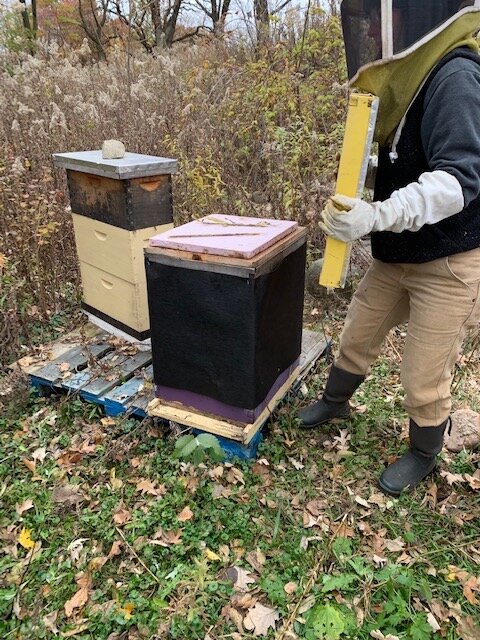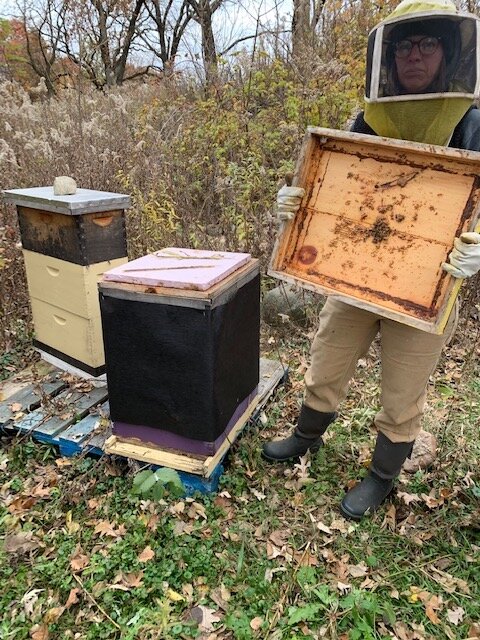WHAT SHOULD I BEE DOING IN NOVEMBER 2019?
PROPOLIS HIVE BODIES, THAT’S A WRAP AND NOVEMBER IS THE NEW JANUARY
For 2 years in a row, November has brought winter to the midwest with a vengeance bringing the bee season to an abrupt end. The weather finally broke yesterday to a balmy 46 after two weeks of hovering in the 20’s. One of those mornings I woke to a below zero reading! The first half of November felt like January. It is too early beeps! The forecast looks mild for the coming weeks. Closer to our normal high which is in the mid-30’s-40’s.
WHAT ARE THE BEES DOING IN November?
Not a whole lot to say here that is different than last month. The biggest difference is that now there is absolutely no pollen anywhere. Because of the abnormally cold weather, bees are clustered tight and working hard to stay warm. Shivering their flight muscles and generating heat to keep their cluster warm. With the break in weather, I have seen bees flying at the warmest part of the day. Taking cleansing flights and cleaning out any dead sisters at the bottom of the hive.
WHAT IS THE BEEKEEPER DOING IN November?
So in a normal year, I would have waited till the end of Thanksgiving to wrap my hives but in anticipation of last years early arctic blast, I decided to insulate and wrap my babies up a little earlier. I provided some examples of wrapped and hives I cuddled together in the photos above. I have had a few of you ask about the moisture/insulation board and where it goes. Insulation/moisture board goes above the inner cover and underneath the telescoping cover. If you are using foam insulation, remember to put duct tape on the board where the inner cover hole is located so that the bees don’t chew it up. If you look closely a the 2nd two photos, you will see a few twigs on top of the pink board. This is to elevate the telescoping cover above the top entrance so air and bees can get out. Don’t forget to put a heavy rock on top so the telescoping cover does not blow away. This has happened to me and the bees were fine but if it had snowed and gotten wet inside, I would have killed my hive! See the photos below.
At one of the Camp Beez Kneez teaching sites, we worked together to move all the hives in front of the old silo because of the incredible wind break provided by the stone wall it sits on top of. I included a picture of us using a hive carrier to show you an easy and proper way to move a colony. We sell these at honey house and they are excellent for moving a heavy hive with 2 people. A few tips on safely moving hives. 1-use a ratchet strap and make sure it is cinched down tight. 2-close the entrances with grass or duct tape to avoid any overachievers from coming out and trying to show you who’s boss. Never never never close your hive up completely if you must move it in the summer time. This is why screened bottom boards are nice. If you don’t have one, you can cut out old pieces of window screen and staple them over the entrances so bees can breath but not get out during the move.
Moving the hives closer together and in front of a winter wind break also gave me the opportunity to feel how heavy each hive was going into winter. If your hives are light and you think they may starve, reference my blog article from March 2019 for winter feeding instructions and recipes. We sell feeder rims and winter patties at the shop. If you have not done this yet, it is not too late. Use this week of milder temps to quickly give them some insurance food. But remember that you will be breaking the propolis seal between the inner cover and the hive body. After adding your feeder rim and winter patty/sugar cake, reseal by wrapping syranwrap to help keep the warm air from escaping. The bees will not be able to do this on their own with propolis before spring.
Besides wrapping, I am finishing giving any hives an oxalic vapor treatment that I did not get to before the temps dropped. I only got to half of my hives before the cold snap so I plan to go out again this week and hit any I missed. When using oxalic vapor, the daytime temp needs to be 37 degrees at application time plus two hours after. Check out this video one of our students took of oxalic vapor treatment.
Other than that, I am resting up and already planning for next year. I provided a few pics of the inside of the propolis hives bodies before and after (photo credit to The Beez Kneez and Abundant Harvest Farm). We put the bees in the special hive bodies this May. By September, they have already built a lot of propolis. Can’t wait to see what they do in year two. I plan to change all my hives over to propolis hive bodies. I am also in the process of cycling out old frames. Pesticide residue and disease can build up and make an unsafe environment for raising future generations. That means I will be building and wiring hundreds of new frames. Bees face so many obstacles in our current environment so I want to give them the best chance to succeed. Cycling frames and allowing them to fill their hive with natural defenses is something I can control.
I am also planning to teach a few classes over the winter. Stay tuned for dates coming soon!
